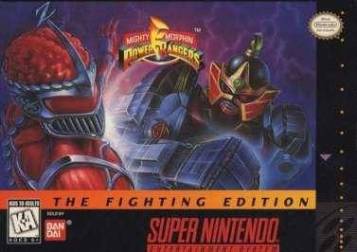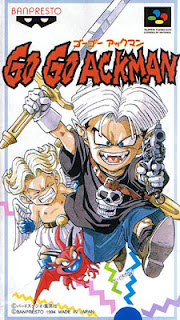And yet, while Dragon Ball was still a relevant series, there was not one good fighting game based on it. Beginning with the Famicom, every release had the potential to take all that was great about Dragon Ball's ridiculous fights and put them in the control of countless rabid fans with the one requirement of being a good game. That's all the fans wanted. Released for the PlayStation, Bandai delivered Dragon Ball GT: Final Bout.
Final Bout was released just as the Dragon Ball series was finishing up in Japan, thus Bandai had the series' entire back-catalog to form the game's roster. Just thinking of all the potential "what if?" fights I could have staged makes me giggle. Given the PlayStation's limited memory, Bandai should have been frugal with their character choices. Instead, they opted towards having multiple iterations of the same character.
I count at least five Gokus and three Trunks.
And that's not even the worst of it! Following the character selection is quite possibly the worst pre-match taunt accompanied by the worst voice actors the English localization team could have found. In Bandai's defense, Final Bout was released even before Dragon Ball Z hit Toonami in '98. Not only were they localizing a game who's namesake was based on a show that hadn't made it overseas, but there also wasn't an established English vocal cast yet. However, this doesn't account for the actual fights themselves to still have the prerecorded Japanese voice actors for every Kamehameha, Big Bang Attack and jump. This provides a nice touch of inauthenticity, as the males in the Japanese Z have quite high-pitched voices, especially when in contrast against the American dub. Perhaps they were lazy? Maybe they wanted the presentation to reflect how half-assed the actual game play was.
Oh God, here comes the game play. There is not one thing about the controls that I can praise. I remember subscribing to Beckett's Dragon Ball Z Collector magazine when I was twelve, and they had a section in one issue dedicated to importing Dragon Ball games. They had a review of Final Bout, and it closed with how badly the controls were. Picture this: there's a tiny man who's sole purpose is to tell the characters in Final Bout what action to perform. In order to do said action, you have to manually write out what the action is, hand it to the little man, who in turn runs down the entire length of the PlayStation controller chord, and delivers the action to the character on screen. Beckett's simile was so spot on, that I'm actually questioning whether or not they're on to something. Playing this game requires an unforgivable amount of dedication, investment, and patience; it's almost like having a relationship with the game, yet I've had relationships that have lasted shorter than how long it takes Vegeta to turn around.
This game is not worth the 30+ dollars it costs to find a copy of the original 1997 American release, and it's not worth the fifteen dollars I spent importing it when I was twelve. There was a re-release in 2004 when Dragon Ball GT actually started airing in America, so the value has naturally gone down, but why bother?





